by Mayumi-H | Jan 7, 2020 | BonusParts A to Z, Writing Challenges
BonusParts from A to Z
A: Alliteration
Welcome to the first post in my BonusParts A to Z theme year! Every 2 weeks or so, I’ll take a letter from the alphabet and choose a word or phrase that begins with that letter and write about what that word or phrase means to me and my writing. This being the first post, I’m starting with the letter A.
When I initially sat down to write this post, I thought I’d look at character names that start with A, since I have so many of them. Just off the top of my head, there’s Aksel, Alana, Amber, Anan, and Aral. But each one of those characters means something uniquely special to me, and I couldn’t put my finger down on just one to write about. So, I turned to my style. One technique I use a lot is Alliteration.
What’s Alliteration?
Alliteration, for anyone out of the know, is when the same sound occurs at the beginning of adjacent or closely connected words. Many tongue twisters employ alliteration, such as the popular Peter Piper picked a peck of pickled peppers. That repetitive hard P sound is alliterative.
People in the past have accused me of being a bit too in love with words. I don’t deny that. Words can create sadness or horror just as easily as they can beauty and joy. One reason I love stories is for their malleable structure. Of course, too much of anything is not necessarily a good thing. That said, every edit requires a concentrated effort to rein in the more whimsical flourishes that flitter off in my first drafts. Here’s one from my current work in progress….
He lay like a pale, dreaming doll, blindfolded, ball-gagged, and bound by long sashes of shimmering satin to the four corners of the bed. He was shirtless, and his trousers had been pulled open to the very last teeth of his zip. Crouched atop him was a petite woman who was mostly naked herself, save for a set of scarlet lingerie cut daringly from silk and lace. She turned at the interruption of their entrance, flame-red hair tumbling around her shoulders. While beautiful, she moved with a coordination that could more accurately be described as ruthlessness rather than grace.
That opening alliterative phrase – blindfolded, ball-gagged, and bound – came to me as many phrases do, as I was on the edge of wakefulness (a topic for another time). Using that basic phrase as a core, I built it out into a more complete description of the moment. I added more embellishments because they’re fun, and I ended up with the paragraph above.
When to use alliteration
Alliteration, like other stylistic devices, can be tricky to use. Too much, and it becomes messy and distracting. Not enough, though, and prose runs the risk of being boring. An editor or beta reader may read this and tell me to pull it back a bit. I myself might even go back in a later revision and decide that it goes too far. But for right now, I like it. And isn’t that what really matters?
How do you fashion phrases? Do you like alliteration? What would you tell me about the example paragraph above? Let me know in the comments section below!
by Mayumi-H | Jun 13, 2019 | Number Seven
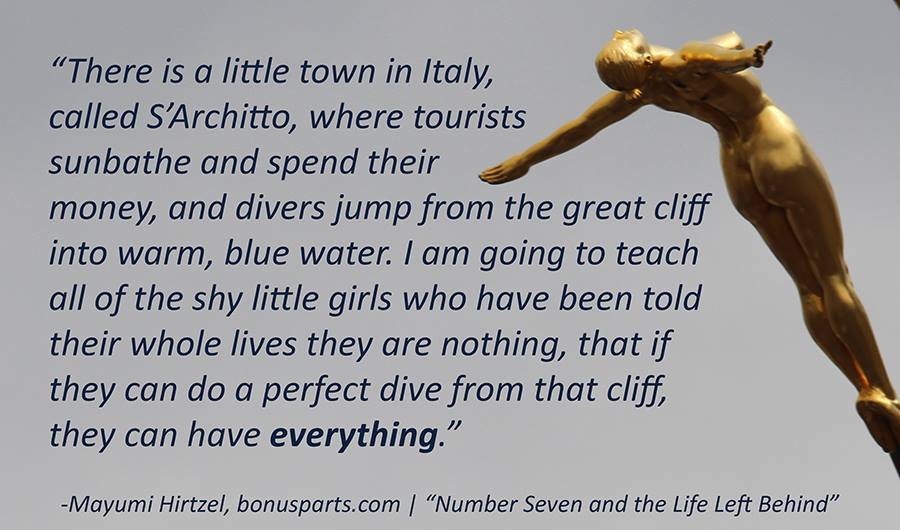
The quote above was originally submitted for a #1LineWed offering on June 13, 2018. It comes from my original character Darya in “Number Seven and the Life Left Behind” and it gave me trouble in every single edit of the story. Every character needs their own conflict, and I wanted to give her one that was separate – and more personal – from what we witness through Number Seven’s eyes.
The backstory tidbit quoted here popped into my head in the first draft and went through surprisingly few changes before the final version. What bothers me to this day isn’t that I wrote it or that I kept it in the published novella, but whether readers understand what I was going for.
Darya’s Backstory
Darya Vikhrova is the only daughter of Ana Vikhrova, a cosmetics industry star and nouveau riche socialite. Darya’s father is unknown to her. Darya grew up amid material wealth but emotional poverty; Ana consistently told her she wasn’t worth a damn and no one would ever want her outside of her inheritance. As a little girl, Darya was withdrawn, fearful, and prone to private outbursts of anger. During a trip to Italy when she was 9 years old, Darya performed a near-perfect dive from a cliff. It changed her life. Ana’s boyfriend at the time, recognizing the feat, suggested Ana send her daughter to a professional coach. Ana and Darya were both only too happy to agree. Soon after, Darya earned a place on the national junior division team and started winning. Most importantly, she left her mother behind. Eventually, Darya would meet Kirill Morozov and his bodyguard Number Seven, and her life would change again.
In the Novella
I still don’t know if Darya’s story progression comes completely clear in the final version of “Number Seven and the Life Left Behind.” I left out a lot of the details listed above, leaving only a few lines devoted to her history, with most of them expressed by other characters, but I just didn’t want to delve too far into her backstory. She’s a secondary character at best and describing her motivations would have slowed down the main story. Still, I liked what she brought to the final product, and she was certainly fun to write! If I ever return to the world of Number Seven and his friends, I know exactly where Darya’s life will take her next.
by Mayumi-H | May 22, 2013 | Persona 4 Fan Fiction, Process, Short Stories
A few weeks ago, I wrote about a particular Free Write Friday picture prompt (Free Write Fridays from Kellie Elmore). What came from that free write session was about 1600 words of a relationship story, one that flowed so naturally from my fingers, I just couldn’t stop writing it. As I mentioned in that earlier post, what struck me as I wrote those characters was how much of a role their religion played in their dialogue. Their sexuality also featured prominently, which is one of the main reasons why I didn’t post the piece at the time. Because you never know who you might offend.
Generally speaking, offending potential readers is not something I care very much about. It’s my belief an artist should create Art that speaks from the soul, no matter how dark, bright, raunchy, or chaste. Whether the artist can then sell that creation if they so choose is an entirely different debate. But, the Art at its core should be honest. Otherwise, it’s not so much art or even craft, but simply a consumable.
Side note: I’m not saying there’s anything inherently wrong with producing for consumption. Nor am I saying consumables necessarily exclude artistry, or vice versa. I think A Song of Ice and Fire has proven that pretty well. Besides, every one needs to eat, no matter how high-falutin’ their principles.
That said, I recently revisited that piece of free writing because I was curious to look at it with fresh eyes. I wanted to see if it really was as bad as I’d originally thought. Holding a marker, I went over and redacted everything I thought anyone could possibly find offensive in any way. This is what came of that exercise:
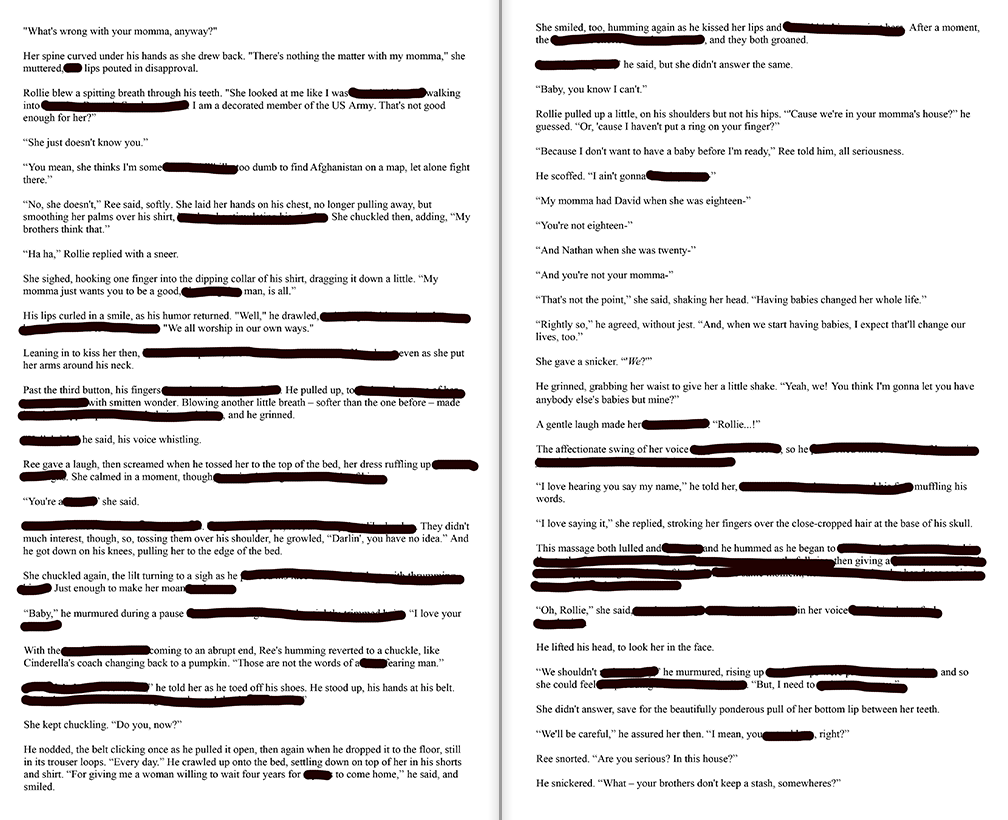
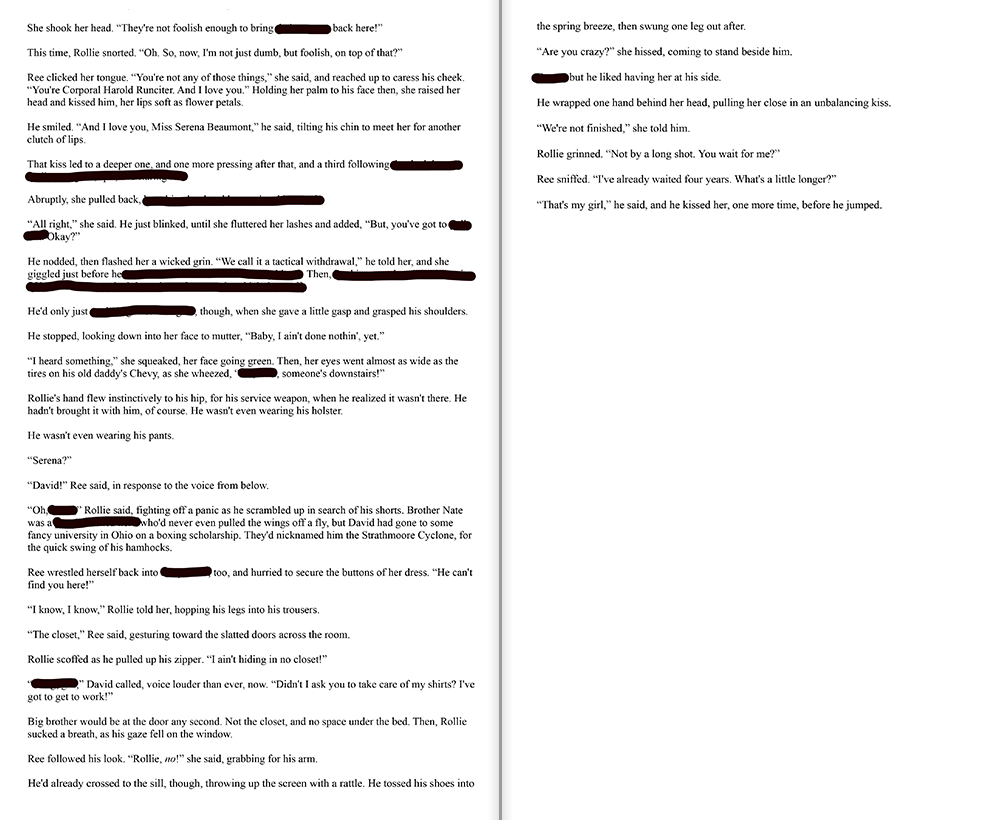
If, for some reason, you’re interested in the actual words, click the images for a more legible experience (they’ll open in a new window or tab). The scene itself isn’t important, though. The reason for this exercise – aside from fueling my own personal amusement – was for me to see just how much black there’d be on those pages.
I’m not particularly smart, so I can’t write good mysteries or thrillers. I’ve only ever held a gun once, and never in a conflict, so I’m not qualified to write a big war epic. But, I understand people, and the everyday conflicts that can arise from personality and heritage clashes. I know love, too, because I experience it in my life every day. And I like sex, because…well, who doesn’t?
I don’t pull many punches when it comes to my stories. I try my best to warn folks ahead of time if a story contains questionable or mature material, but I also believe any individual should be able to decide for themselves if they want to continue or not. But, I’m writing these for me, first, and those topics are the ones I personally enjoy exploring. If they need to be redacted later, to fit someone else’s idea of what’s appropriate or salable, well, that’s life.
Have you ever redacted or edited something you’d written to fit someone else’s sensitivities? Why did you do it? Or, if you didn’t do it, why not?
by Mayumi-H | Jan 7, 2013 | Excerpts, Fearless
(Or, visualisation, if it please you, Beth. ;))
I think writers should be as visual as traditional artists. Perhaps more so, because we need to provide description for a reader, without the benefit of a comic panel or moving image. But, dwelling on description overlong can become tedious for a reader, and that we never want.
“Good morning,” he replied, coming to a slow stop in front of her. He propped his board beside him, shielding her from the bright sun; it didn’t make her any less pretty.
“Ah…Amber, yeah?” he said, feigning blase non-involvement.
She nodded. “And you’re…” She paused a moment. “Fearless?”
He snorted. “Close enough. Ross.”
“Right,” she said. Though from her smile, he guessed she hadn’t needed the reminder, either.
He raised his brow at her. “You need help with something?”
“You said I should stop by,” she reminded him, as she glanced up at the sign of the shop, with its graffiti-style lettering. Looking back to him, she smiled again. “So, here I am.”
“Here you are,” he echoed, as he felt himself break into a smile, too.
That’s the only time the shop sign is mentioned, but I still came up with a design:

The Fearless shop logo
Mostly, I did it because I like playing around with graffiti. But, I also think it’s important for a writer to have a firm vision of the world in which their characters live. The more we know – either in our heads or on the page – the less we need to explain to the reader: the details usually invariably find their way into the story on their own.
I design (or, at least, I keep detailed notes for) every location of any import in my stories, from Ross’s living loft above the shop, to Amber’s hospital room, to the Truro flat. I did the same for a Japanese apaato and a country ryokan, a starfaring tramp tanker and a soldier’s little love nest. Because understanding where your characters are will help everyone understand where they go, how, and why (we call that “blocking” in theatre-speak).
How do you design your locations in your stories?
by Mayumi-H | Nov 26, 2012 | Excerpts, Fearless, Process
Breathless, sweaty, and dizzy of a sudden, Ross tumbled to the bed beside her, one arm still draped loosely around her. They would need to clean up and wash before bed, but, for the moment, he just wanted to lie with her in the drowsy quiet. So, settling his head next to hers, he blinked, and swallowed, and asked:
“Can we cuddle a bit?”
No mincing words, here: I think sex is an important part of any adult, loving relationship. It’s fun to write, too…though what’s more interesting is examining what happens around the main act. Pillow talk in these situations can offer a unique perspective on your character.
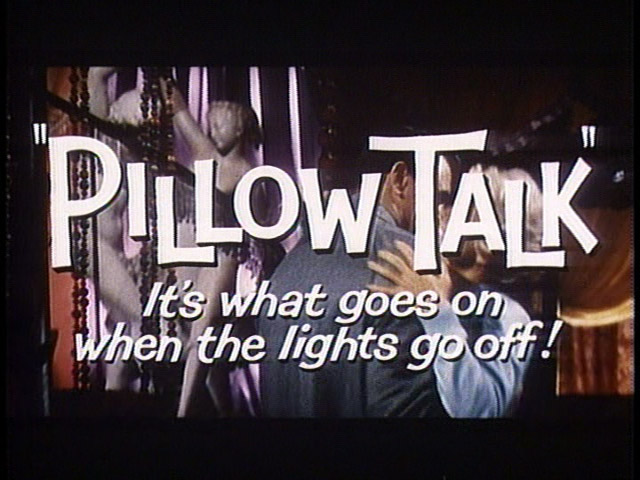
Trailer title from the 1959 movie; public domain image.
Lovers (and this includes men, here) are often much more honest with each other when they’re naked and relaxed, coming down from a sexual high. Just something about that situation, I guess, that opens people up. 😉
If you’re so inclined to write a sex scene, I’d suggest at least considering that opportunity of after-sex pillow talk, to broach some of your more sensitive topics. Perhaps your woman has body image issues, or your man has trouble with intimacy. You can potentially use this time to explore those, in a natural, conversational way.
Because honest communication is what truly makes sex sexy.
If you write sex, on what part do you like to focus: the buildup, the climax, or the denouement? If your story doesn’t include the convention of sex, how do you approach sensitive relationship subjects?
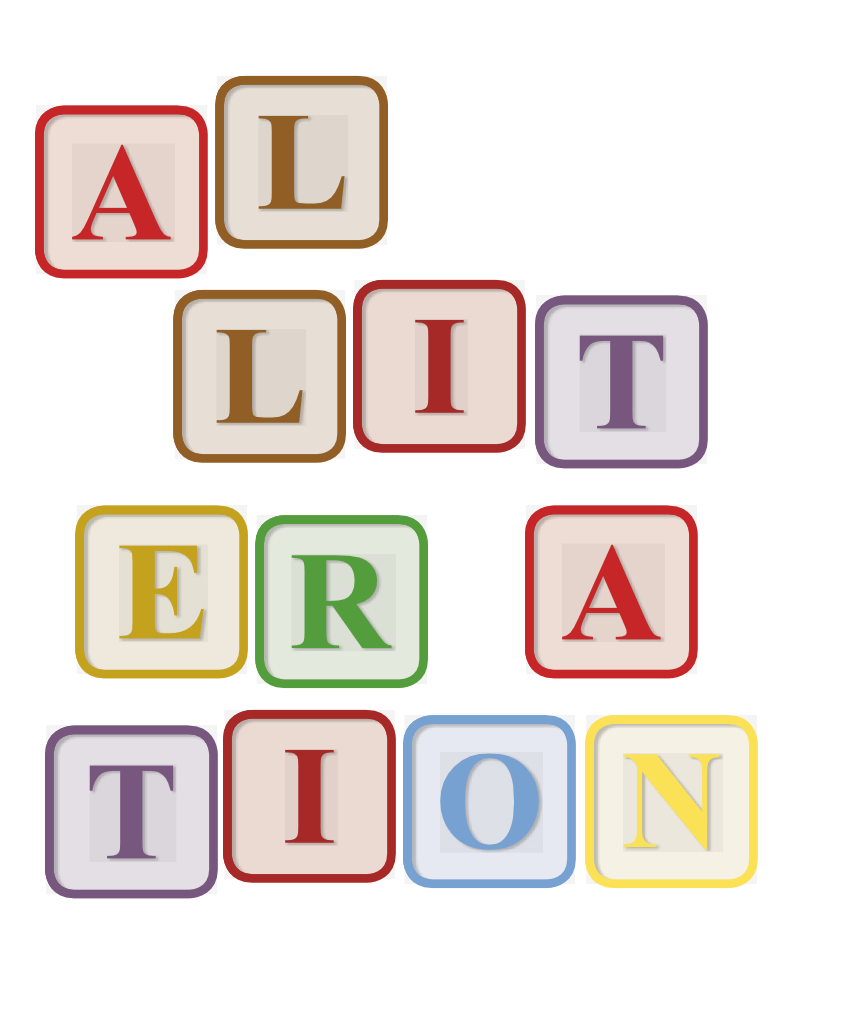






Recent Comments
The Real Person!
Author Mayumi-H acts as a real person and passed all tests against spambots. Anti-Spam by CleanTalk.
The Real Person!
Author Mayumi-H acts as a real person and passed all tests against spambots. Anti-Spam by CleanTalk.